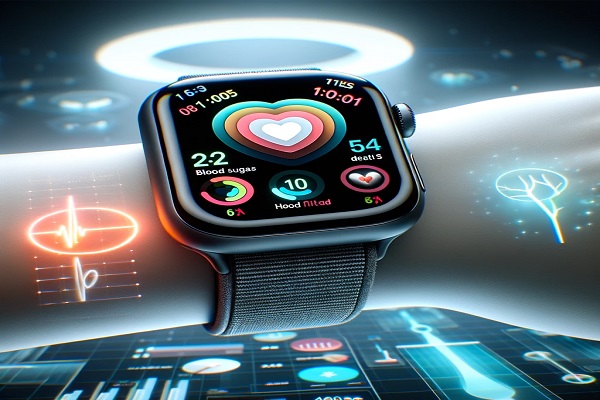The Apple Watch has revolutionized the wearable technology market since its inception, seamlessly integrating fitness tracking, health monitoring, and smartphone capabilities into a single, stylish device. With each iteration, Apple has introduced new features and improvements that have set the standard for smartwatches worldwide. The upcoming Apple Watch Series 9 is rumored to include one of the most significant advancements yet: the ability to measure blood sugar levels. This potential feature could have profound implications for millions of people, particularly those managing diabetes.
The Growing Importance of Blood Sugar Monitoring
Blood sugar monitoring is crucial for individuals with diabetes, a condition that affects over 400 million people globally. Traditionally, monitoring blood glucose levels requires frequent finger-prick tests or continuous glucose monitors (CGMs), which involve inserting a sensor under the skin. These methods, while effective, can be invasive, painful, and inconvenient. The introduction of a non-invasive, continuous blood sugar monitoring solution could dramatically improve the quality of life for diabetes patients, offering a more comfortable and seamless way to track their glucose levels.
Technological Challenges and Innovations
The concept of non-invasive blood glucose monitoring is not new; it has been a goal for medical device companies and researchers for decades. However, achieving accurate and reliable measurements without penetrating the skin presents significant challenges. Blood sugar levels fluctuate based on numerous factors, including diet, exercise, stress, and medication, requiring a highly sensitive and precise sensor to provide meaningful data.
Apple’s potential breakthrough likely involves advanced optical sensors and machine learning algorithms. The Apple Watch already uses photoplethysmography (PPG) sensors to monitor heart rate and blood oxygen levels by shining light into the skin and measuring the reflected light. By refining this technology and incorporating additional wavelengths of light, it might be possible to estimate glucose levels based on how glucose molecules in the blood absorb and reflect light. Coupled with sophisticated algorithms to analyze the data, the Apple Watch Series 9 could offer a non-invasive solution for blood sugar monitoring.
Implications for Healthcare and Everyday Life
If Apple succeeds in integrating blood glucose monitoring into the Apple Watch Series 9, the implications for healthcare and everyday life could be profound. For diabetes patients, the ability to monitor blood sugar levels continuously and non-invasively could lead to better disease management and improved health outcomes. Real-time data could help users make more informed decisions about their diet, exercise, and medication, potentially reducing the risk of complications such as hypoglycemia or hyperglycemia.
Beyond diabetes management, continuous blood sugar monitoring could benefit a broader audience. For instance, athletes and fitness enthusiasts might use the data to optimize their performance and recovery. Individuals at risk of developing diabetes could use the feature as a preventive tool, gaining insights into how their lifestyle choices impact their blood sugar levels and making necessary adjustments before developing the condition.
Privacy and Data Security Concerns
As with any health-monitoring technology, the introduction of blood sugar monitoring on the Apple Watch raises concerns about privacy and data security. Apple has a strong track record of prioritizing user privacy, and it will be essential to ensure that sensitive health data is securely stored and transmitted. Users must trust that their information is protected and used appropriately, particularly as health data becomes increasingly valuable in the digital age.
The Road Ahead
While the inclusion of blood sugar monitoring in the Apple Watch Series 9 is still speculative, the possibility highlights Apple’s commitment to advancing health technology. The company has consistently pushed the boundaries of what wearable devices can achieve, and this potential feature could set a new standard for the industry.
In conclusion, the rumored ability of the Apple Watch Series 9 to measure blood sugar levels represents a significant leap forward in wearable health technology. If realized, this innovation could transform the way millions of people manage their health, offering a more convenient, non-invasive solution for monitoring blood glucose levels. As we await the official announcement, the prospect of such a feature underscores the continued importance of innovation in improving healthcare and enhancing our everyday lives.
